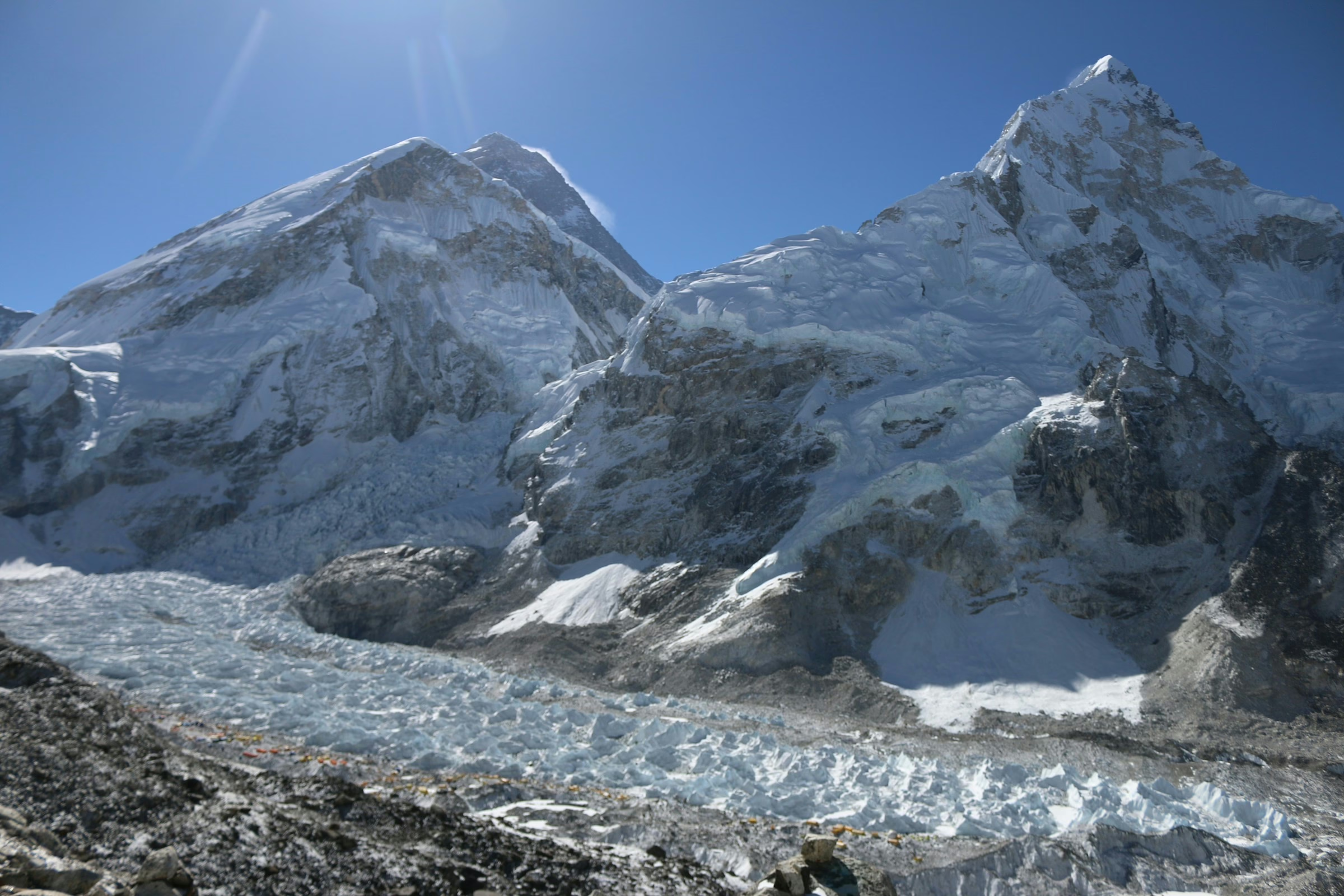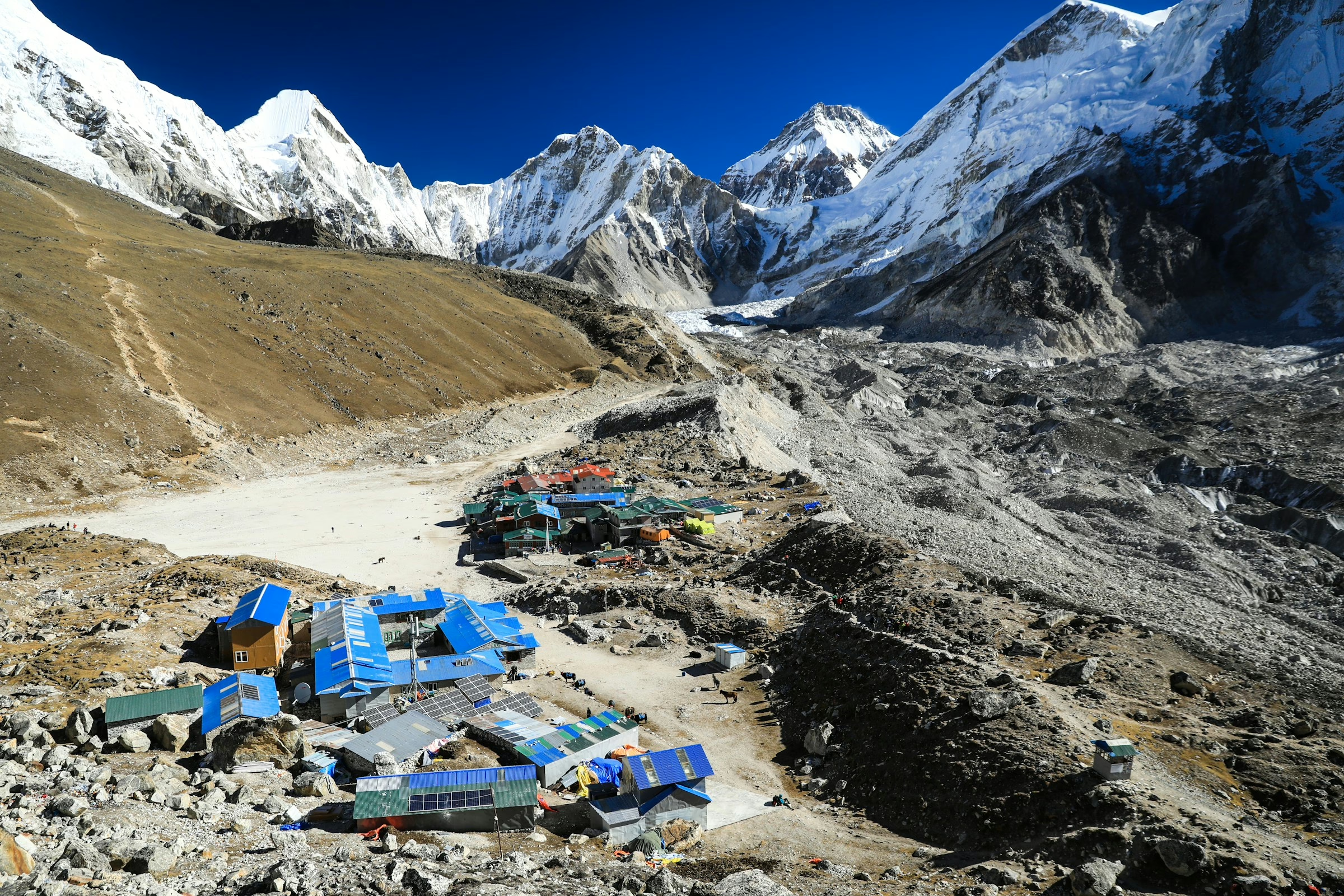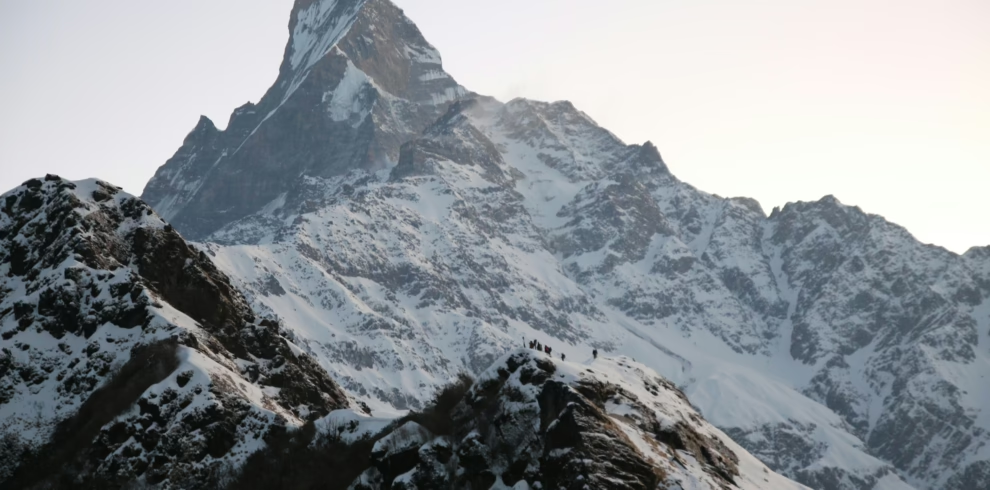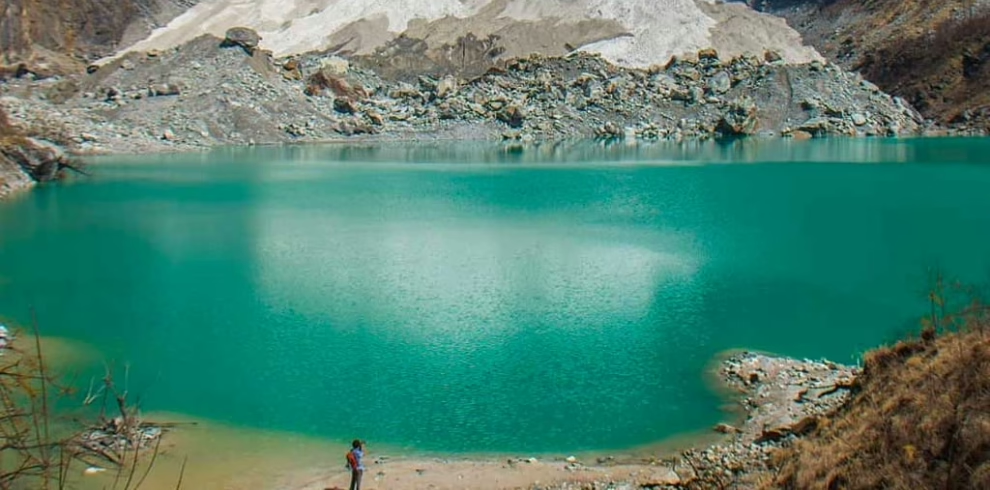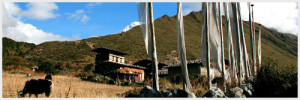Trekking to Everest Base Camp has become increasingly popular among Indian adventurers—and for good reason. As close neighbors, India and Nepal share not only borders but also deep cultural ties and hassle-free travel access. With this in mind, we’ve crafted a special Everest Base Camp Trek for Indian—making it easier, more affordable, and more relatable than ever.
This 8-day journey from Lukla to the base of the world’s highest peak is nothing short of extraordinary. You’ll follow the classic Everest trail, walking across thrilling suspension bridges, exploring serene Buddhist monasteries, and experiencing the warm hospitality of the Sherpa people—known for their strength, resilience, and deep-rooted traditions. Your destination: Everest Base Camp at 5,364 meters, a place of inspiration for trekkers around the world.
Along the way, you’ll be treated to jaw-dropping views of some of the highest and most iconic mountains on Earth—including Mount Everest, Lhotse (8,501 m), Makalu (8,463 m), Cho Oyu (8,153 m), and the stunning Ama Dablam (6,856 m).
Our Everest Trek for Indians is more than just a trek—it’s the adventure of a lifetime. Whether you’re a first-time hiker or a seasoned trekker, this journey offers the perfect blend of natural beauty, cultural richness, and personal achievement—all within a reasonable budget tailored for Indian travelers.
From sparkling blue rivers and dramatic glacial landscapes to forests of rhododendron and pine, every step immerses you in the unique magic of the Himalayas. If Everest has ever been on your bucket list, this is your sign—it’s time to make it happen.
Overview
Most major treks in Nepal, including Everest Base Camp, feature a network of tea houses offering comfortable lodging and freshly prepared meals. If you’re physically fit and knowledgeable about altitude sickness, it’s possible to trek independently without a guide or porter. However, if you’re planning a solo Everest Base Camp trek, it’s important to budget carefully. Costs for food, drinks, and other services increase significantly as you gain altitude, so bring sufficient cash for the journey.
The Everest Trek for Indians is notably more affordable for Indian nationals compared to travelers from other countries. Indians don’t require a visa to enter Nepal and have various travel options to reach Kathmandu—whether by flight, public transport, or even private vehicle. Additionally, Indian trekkers benefit from significantly reduced permit and travel costs, even though food and lodging prices remain the same.
The trek begins with an exciting 35-minute flight to Lukla. From there, the route takes you through iconic Sherpa villages such as Namche Bazaar, Tengboche, Dingboche, Lobuche, and Gorakshep. Along the way, you’ll pass terraced fields, ancient monasteries, and witness awe-inspiring views of peaks like Everest, Lhotse, Thamserku, Island Peak, and Nuptse. One of the highlights is the panoramic sunrise view from Kalapatthar, offering one of the best Himalayan vistas.
Our Everest Trek Cost for Indians package is among the most popular and cost-effective options. The itinerary includes accommodation in tea houses and lodges, and you’ll be guided by experienced Sherpa guides and porters who are attentive to your comfort and needs throughout the trek.
As an Indian passport holder, it’s helpful to understand the altitude of key points along the trail. This knowledge is essential for effective acclimatization and planning. We recommend reviewing our detailed Everest Base Camp Trek Map with Altitude Information, which provides vital insights to help you prepare wisely for the adventure.
Benefits of Booking the Everest Trek for Indians with Us
- Airport pickup and drop-off (international and domestic)
- Everest Base Camp trek map included
- Oximeter for monitoring blood oxygen levels
- Basic medical kit for emergencies
- Free luggage storage at Green Lotus Trekking during the trek
What to Expect from the Everest Trek for Indians?
The Everest Trek for Indians begins with a scenic flight from Kathmandu to Lukla, one of the world’s most thrilling airports. From there, your trek passes through Sagarmatha National Park, a UNESCO World Heritage Site known for its rich alpine vegetation, including rhododendron, fir, juniper, blue pine, birch, and bamboo forests.
Along the route, you’ll encounter breathtaking Himalayan views, including several iconic peaks. A key highlight is the hike to Kala Patthar, which offers the most stunning panoramic view of Mount Everest.
The region is home to the Tibetan Buddhist Sherpa community, known for their hospitality and cultural heritage. A visit to the Tengboche Monastery provides a deeper understanding of their spiritual traditions and way of life. Throughout the trek, you’ll witness the unique customs, resilience, and lifestyle of the Khumbu people.
Who is the Everest Trek for Indians Suitable For?
This package is specifically tailored for Indian travelers and suits a wide range of interests:
- Adventure Enthusiasts: Ideal for those who enjoy hiking, outdoor challenges, and high-altitude exploration.
- Nature Lovers: Perfect for those who want to experience the raw beauty of the Himalayas up close.
- Fitness Enthusiasts: Suitable for physically active individuals who can handle long daily hikes and varying terrain.
- Cultural Explorers: Great for anyone eager to learn about Sherpa culture and interact with local communities.
- Indian Travelers: Designed with Indian preferences in mind—including cultural familiarity, dietary needs, and cost-effective options.
How to Prepare for the Everest Trek for Indians?
This 14-day trek includes 11 days of walking, with daily hikes lasting 5–6 hours over uneven terrain. Trekkers must carry a backpack weighing around 6–12 kg, so physical preparation is essential.
Start training a few months in advance, focusing on endurance and strength. Include:
- Weekly hikes on hills with a loaded backpack
- Cardiovascular exercises to improve lung capacity
- Strength training for legs, core, and back
High altitudes mean reduced oxygen levels, so conditioning your body beforehand helps prevent altitude sickness and enhances your trekking experience. Even seasoned hikers prepare thoroughly for this demanding journey.
While not as extreme as climbing Everest, this trek is challenging and requires commitment. Expect unpredictable weather and be mentally prepared for altitude-related risks. Proper preparation is key to enjoying a safe and successful adventure.
Useful Information for Everest Trek Cost for Indians
Best Time for the Everest Trek for Indians
While the Everest Base Camp Trek is possible year-round, spring and autumn are the most popular seasons. Winter and summer see fewer trekkers due to harsher weather conditions, but trekking is still possible during specific windows.
Spring (March to May):
Ideal for trekking, with clear skies, pleasant weather, and vibrant rhododendron blooms. Trails are scenic with lush landscapes and flowing rivers.
Autumn (September to November):
Another peak season with stable weather, clear mountain views, and cooler temperatures. Post-monsoon freshness and fewer chances of snowfall make it a favorite among trekkers.
Meals During the Trek
Meal costs make up a significant part of your Everest Trek package. While options are limited at higher altitudes, teahouses offer a variety of warm meals. Popular items include:
- Dal Bhat (rice, lentils, vegetables) – filling and refillable.
- Momo, fried rice, noodles, roti with curry, and oatmeal.
Avoid meat as it may not be fresh. Western food options are limited and costly at higher elevations. Bring your own snacks like chocolate bars, nuts, dried fruit, or mints to supplement your meals.
Accommodation on the Everest Trek for Indians
Accommodation is provided in teahouses or lodges, typically offering twin-sharing rooms. Capacity can range from 25–30 guests depending on the location. Prices vary:
- Low altitude: NPR 500–1000/night
- High altitude: NPR 1500–2000/night (can be higher in peak season)
In busy areas like Lobuche and Gorakshep, expect very basic amenities and, at times, shared accommodations with multiple trekkers. Meals must be taken at your staying lodge.
Challenges and Difficulties
The trek involves long daily walks with a 6–12 kg backpack over uneven terrain. It’s easier for seasoned hikers but challenging for beginners. Key challenges include:
- High altitude (over 5000m)
- Physical endurance (5–6 hours of trekking per day)
- Weather fluctuations
- Altitude sickness risks
No technical climbing experience is required, but preparation is crucial. Regular cardio, strength training, and hill walking months before the trek are recommended.
Travel Insurance Requirements
Travel insurance is essential for this high-altitude trek (up to 5550m at Kala Patthar and 5364m at Base Camp). Your insurance should cover:
- Emergency evacuation (including helicopter rescue)
- Medical treatment for altitude-related illnesses
- Flight cancellations or delays
- Theft or loss of belongings
Without insurance, treatment and rescue costs at altitude can be prohibitively expensive.
Altitude Sickness & Prevention
To minimize the risk of Acute Mountain Sickness (AMS):
- Ascend gradually and allow for acclimatization days.
- Follow “climb high, sleep low” – hike to a higher point, then return to sleep at a lower elevation.
- Stay hydrated – drink 500 ml of warm water every 30 minutes.
- Avoid alcohol, tobacco, and smoking.
- Eat properly – consume enough calories and fluids even if your appetite drops.
- Stay positive – a good mental attitude helps reduce anxiety and stress, which can worsen symptoms.
Packing List for Everest Trek for Indians
Essential items:
- Sunglasses, sun hat, woolen cap/balaclava
- Inner and outer gloves
- Quick-dry towel, flip-flops/sandals, toiletries
- 30L daypack with rain cover
- Trekking pants and waterproof trousers
- T-shirts, fleece, and down jacket
- Windproof jacket
- Thermal base layers (top and bottom)
- Headlamp, power bank, extra batteries
- Sunscreen, wet wipes, hand sanitizer
- Water bottles and purification tablets
- Sleeping bag liner
- Socks and underwear
Booking Procedure for Everest Trek for Indians
Green Lotus Trekking, a government-approved tour operator with over 10 years of experience, offers this package. We are registered with the Nepal Mountaineering Association (NMA) and Trekking Agencies Association of Nepal (TAAN).
To Book:
- Pay a 20% deposit.
- Send scanned copies of your passport, passport-size photos, travel insurance, and flight details.
- Payment methods: bank transfer, Western Union, or online.
Upon arrival in Nepal, the balance can be paid via cash, bank transfer, or credit card. We will email you all necessary payment and booking details.
Highlights
- Fly into Lukla’s high-altitude Tenzing-Hillary Airport.
- Enjoy aerial views of the stunning Khumbu region during the flight.
- Witness the icy wonders of the Khumbu Glacier and Icefall.
- Trek through Sagarmatha National Park, rich in diverse flora and fauna.
- Explore Namche Bazaar, the gateway to all Everest treks.
- Immerse yourself in the unique culture and traditions of the Sherpa community.
- Walk past high suspension bridges, colorful prayer flags, spinning wheels, and carved Mani stones.
- Visit Tengboche Monastery, the largest and oldest in the Khumbu region.
- Reach Everest Base Camp, located at the foot of the world’s tallest mountain.
- Hike to Kala Patthar for a breathtaking sunrise and 360° panoramic views of the Himalayas.
- Admire majestic peaks including Everest, Lhotse, Makalu, Cho Oyu, Nuptse, Thamserku, Pumori, and Kongde.

